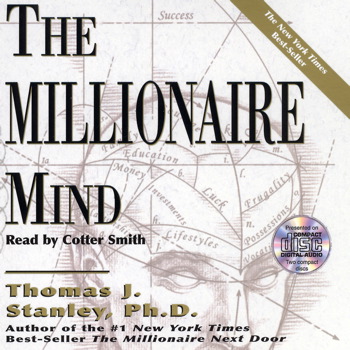

That makes little sense since it would take a new graduate years of strong savings and investments to accumulate that amount. This metric has been criticized since, for example, a 20-year-old making $50k a year should have a net worth of $100k to be considered an "average accumulator of wealth". An "Under Accumulator of Wealth (UAW)" would have half that amount, and a "Prodigious Accumulator of Wealth (PAW)" would have two times. E.g., a 50-year-old person who over the past twelve months earned employment income of $45,000 and investment income of $5,000 should have an expected net worth of $250,000. The authors define an Average Accumulator of Wealth (AAW) as having a net worth equal to one-tenth their age multiplied by their current annual income from all sources. The UAW style is based more on consumption of income rather than on the method of saving income.Ī Prodigious Accumulator of Wealth (PAW) is the reciprocal of the more common UAW, accumulating usually well over one tenth of the product of the individual's age and their realized pretax income. If their net worth is lower, they are an "Under Accumulator". According to the authors' formula he should be saving 10% yearly and should have about $1.25 million in net worth (50*250,000*10%). Take for example a 50-year-old doctor earning $250,000. A doctor earning $250,000 per year could be considered an "Under Accumulator of Wealth" if their net worth is low relative to lifetime earnings. Under Accumulator of Wealth (UAW) is a name coined by the authors used to represent individuals who have a low net wealth compared to their income. 5.1 Correlation between income and wealth.2.3 PAWs are willing to take financial risk if it is worth the reward.2.2 Avoid buying status objects or leading a status lifestyle.Stanley and Danko's book explains why, noting that high-income white-collar professionals are more likely to devote their income to luxury goods or status items, thus neglecting savings and investments. Their findings, that millionaires are disproportionately clustered in middle-class and blue-collar neighborhoods and not in more affluent or white-collar communities, came as a surprise to the authors who anticipated the contrary. The authors compare the behaviour of those they call "UAWs" (Under Accumulators of Wealth) and those who are "PAWs" (Prodigious Accumulator of Wealth). The book is a compilation of research done by the two authors in the profiles of American millionaires. The Millionaire Next Door: The Surprising Secrets of America's Wealthy ( ISBN 0-6) is a 1996 book by Thomas J.

( Learn how and when to remove this template message) ( October 2020) ( Learn how and when to remove this template message) Please help rewrite this article from a descriptive, neutral point of view, and remove advice or instruction.
#“the millionaire next door” author manual#
This article is written like a manual or guidebook.


 0 kommentar(er)
0 kommentar(er)
